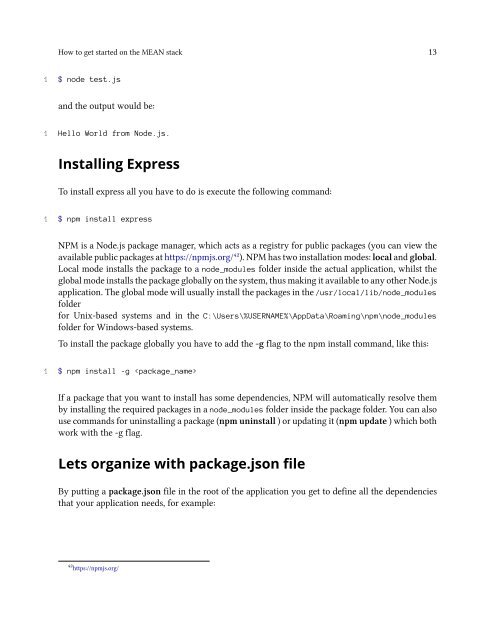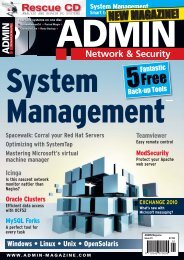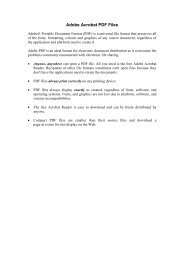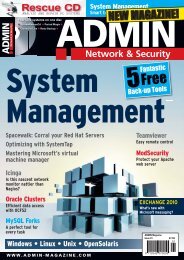Mittwoch, 18. Mai, 2016
Create successful ePaper yourself
Turn your PDF publications into a flip-book with our unique Google optimized e-Paper software.
How to get started on the MEAN stack 13<br />
1 $ node test.js<br />
and the output would be:<br />
1 Hello World from Node.js.<br />
Installing Express<br />
To install express all you have to do is execute the following command:<br />
1 $ npm install express<br />
NPM is a Node.js package manager, which acts as a registry for public packages (you can view the<br />
available public packages at https://npmjs.org/⁴²). NPM has two installation modes: local and global.<br />
Local mode installs the package to a node_modules folder inside the actual application, whilst the<br />
global mode installs the package globally on the system, thus making it available to any other Node.js<br />
application. The global mode will usually install the packages in the /usr/local/lib/node_modules<br />
folder<br />
for Unix-based systems and in the C:\Users\%USERNAME%\AppData\Roaming\npm\node_modules<br />
folder for Windows-based systems.<br />
To install the package globally you have to add the -g flag to the npm install command, like this:<br />
1 $ npm install -g <br />
If a package that you want to install has some dependencies, NPM will automatically resolve them<br />
by installing the required packages in a node_modules folder inside the package folder. You can also<br />
use commands for uninstalling a package (npm uninstall ) or updating it (npm update ) which both<br />
work with the -g flag.<br />
Lets organize with package.json file<br />
By putting a package.json file in the root of the application you get to define all the dependencies<br />
that your application needs, for example:<br />
⁴²https://npmjs.org/
















